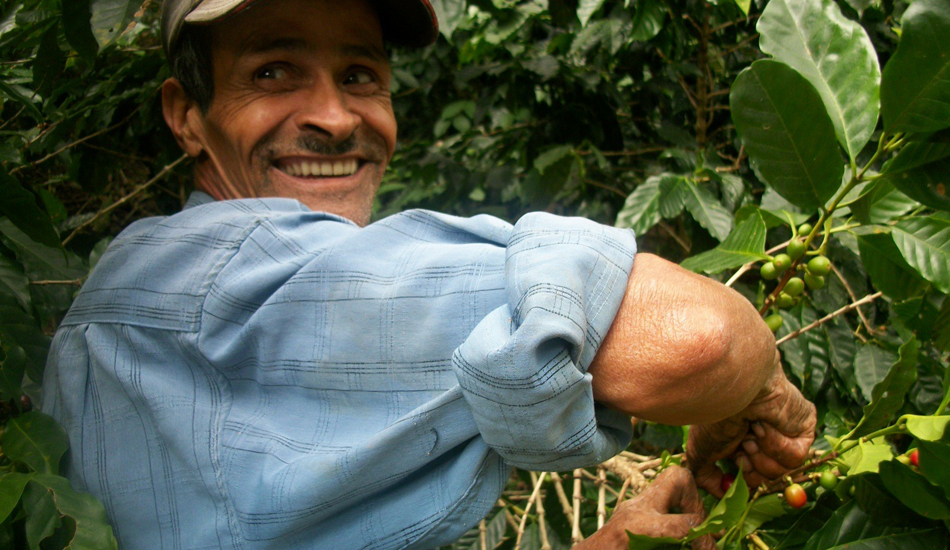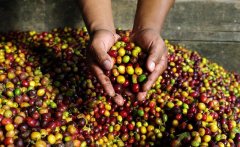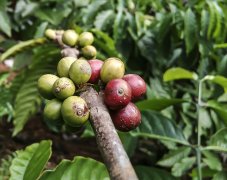Nicaraguan coffee characteristics, uses, coffee producing area & output, general situation of coffee production and marketing over the years

For professional baristas, please follow the coffee workshop (Wechat official account cafe_style)
The Republic of Nicaragua is the largest country in Central America, with an area of 130000 1670 square kilometers. It is bordered by Honduras to the north, Costa Rica to the south, the Caribbean Sea to the east and the Pacific Ocean to the west, between latitudes 11 and 15 degrees north. The country is divided into three major geographical regions, namely, the central isthmus mountain range, the Pacific shore hilly plain, the Atlantic coastal plain and the depressed lake area. About half of the territory is covered by tropical forests, while the lower areas of the east are steppe marshes. The two largest lakes in the country are Lake Nicaragua and Lake Managua in order. The former covers an area of 8,000 square kilometers, while the latter covers an area of 1,000 square kilometers. The two lakes are connected by a river. Nicaragua's three largest cities, Managua (Managua), LEON (Leon) and GRANADA (Granada) are all located on the banks of the lakes.
Nicaragua is one of the leading coffee suppliers in the world.
Coffee characteristics
Coffee beans are a commodity in global trading volume second only to crude oil. The rise and fall of prices are related to the political and economic stability of coffee-producing countries. For decades, coffee beans have been the most speculative commodity in the world. Generally speaking, it takes two to three years for coffee trees to bear fruit and five to six years for coffee to be harvested. Therefore, it is suitable for small farmers with limited funds to operate and avoid investment risks and losses.
There are about 40 varieties of coffee beans in the world, the common coffee ARABICA coffee grows in high altitude areas, the flavor is more rich, is a better coffee variety, ROBUSTA coffee grows in low altitude areas, easier to grow, caffeine content is also higher.
Coffee use
Coffee is used as a beverage. Most of the ground coffee used in Europe and the United States is ARABICA coffee, while ROBUSTA coffee is mainly made into instant coffee, which is a relatively cheap coffee.
Coffee producing area & output
Coffee is widely distributed in South America, Central America, the West Indies, Asia, Africa, Arabia, the South Pacific and Oceania. In terms of production, Brazil ranks first in the world, accounting for about 1/3 of the world, followed by Colombia, accounting for about 15 per cent of the world, followed by Africa (including C ô te d'Ivoire, Uganda, Kenya, etc.), Arabia, and distributed in Asian countries and islands.
ARABICA coffee is mainly produced in Brazil, Colombia, Mexico, Guatemala Mara, El Salvador, Honduras, Costa Rica, Nicaragua and other countries, mainly concentrated in Central and South America, Brazil is the most important producer of ARABICA coffee.
ROBUSTA coffee production is concentrated in Southeast Asia, Indonesia, Vietnam, Thailand, India and other countries.
Coffee supply & demand
Most of the coffee importing countries are developed countries, and the largest coffee importing countries in the world are the United States, Germany, Japan, South Korea, France and other countries, accounting for about half of the global coffee consumption. In addition, Brazil is also a major consumer, with annual per capita coffee consumption close to that of European countries.
The main exporters of coffee are Brazil, Colombia, Vietnam, Indonesia, Mexico, Uganda and other developing countries. As the trade barriers to coffee are lower than those of other agricultural products, and international organizations also encourage developing countries to grow coffee, poor countries are allowed to join the cultivation process.
Factors affecting the price of coffee
1. Climate, diseases and insect pests in the producing area
two。 Seasonal factors
3. International demand and supply
4. Government policies and International Coffee Organization measures
Production and Marketing of Coffee products in Nicaragua over the years
Year
Output
Unit: thousand packs (60kg each)
Export volume: thousand bales (60kg each)
Consumption unit: thousand packets (60 kg each)
Year 2001
1040
nine hundred and fifteen
one hundred and fifty five
2002
1000
eight hundred and fifty five
one hundred and fifty five
2003
1405
1270
one hundred
2004
1130
1015
one hundred and eighteen
2005
1718
1427
one hundred and ninety
2006
1300
1280
one hundred and seventy nine
2007
1850
1745
ninety
2008
1650
1585
ninety
2009
1925
1806
ninety
2010
1740
1665
ninety
2011
2100
1780
ninety
2012
1925
2070
ninety
2013
1500
1450
sixty
2014
2015
2016
Important Notice :
前街咖啡 FrontStreet Coffee has moved to new addredd:
FrontStreet Coffee Address: 315,Donghua East Road,GuangZhou
Tel:020 38364473
- Prev

History of coffee cultivation in Nicaragua an introduction to the current situation of coffee industry in Nicaragua
Communication of professional baristas follow Coffee Workshop (Wechat official account cafe_style) Coffee was introduced to Nicaragua by Catholic missionaries in 1790 and was originally grown out of curiosity, but it was not until around 1840 that coffee cultivation began to receive attention because of the growth in global demand for coffee. In 1840 and 1940, the coffee industry had a great impact on the Nicaraguan economy.
- Next

How about the flavor of East Timor coffee? description of the flavor of iron pickup truck washed by small farmers
For professional baristas, please follow the coffee workshop (official Wechat account cafe_style). Timor Leste Ermera Lacau Village TypicaArabi, a small farmer in Lakau Village, Emera District, East Timor. East Timor Ermera is about 1500 to 1700m. Typica flavor description: sweet citrus flavor can be felt in the entrance, and lemon peel lingers in front of the nose.
Related
- Detailed explanation of Jadeite planting Land in Panamanian Jadeite Manor introduction to the grading system of Jadeite competitive bidding, Red bid, Green bid and Rose Summer
- Story of Coffee planting in Brenka region of Costa Rica Stonehenge Manor anaerobic heavy honey treatment of flavor mouth
- What's on the barrel of Blue Mountain Coffee beans?
- Can American coffee also pull flowers? How to use hot American style to pull out a good-looking pattern?
- Can you make a cold extract with coffee beans? What is the right proportion for cold-extracted coffee formula?
- Indonesian PWN Gold Mandrine Coffee Origin Features Flavor How to Chong? Mandolin coffee is American.
- A brief introduction to the flavor characteristics of Brazilian yellow bourbon coffee beans
- What is the effect of different water quality on the flavor of cold-extracted coffee? What kind of water is best for brewing coffee?
- Why do you think of Rose Summer whenever you mention Panamanian coffee?
- Introduction to the characteristics of authentic blue mountain coffee bean producing areas? What is the CIB Coffee Authority in Jamaica?

